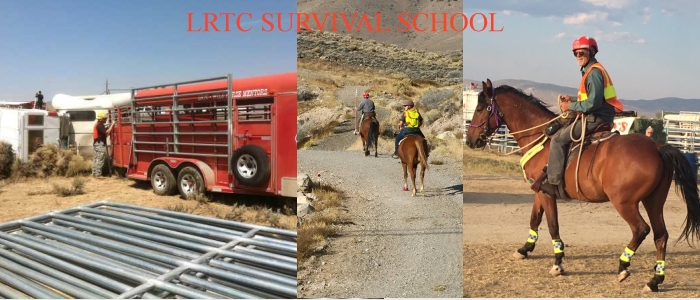Electrical Systems
Conspicuity involves the ability for a vehicle (in this case a trailer) to present a proper image to other drivers so that they can determine the size of the vehicle, its direction, rate of travel and distance from the observing driver (if moving) or its actual position on the roadway and space being taken up if parked. Given the plethora of distractions on modern streets and highways, the science of conspicuity has evolved considerably, most notably in the area of retroreflective materials that can help outline the shape and size of larger vehicles when viewed from considerable distances. Since it's not practical to paint our trailers with highly reflective paint, the application of reflective materials is the most common approach to conspicuity.
First we need to understand a couple of definitions.
- Reflective: The ability of a surface to reflect light at approximately 90 degrees from the surface.
- Retroreflective: The ability of a surface to reflect light at relatively wide angles from the surface.
Naturally retroreflective is the desired material for use on vehicles as approaching motorists and headlamps could come from a wide variety of directions. (Traditional DOT red and silver striping is an example of retroreflective material.)
Rear-end collisions are too common with respect to horse trailers. The tail/stop/turn lamps on many trailers are mounted low, below the normal line of sight of following motorists. Improved "diagonal" retroreflective striping can help maintain motorists' attention, particularly as the space between the trailer and the following vehicle narrows and the stripes start to appear larger.
Red and lime-yellow diagonal striping on a trailer operated in smoke from a wildfire.
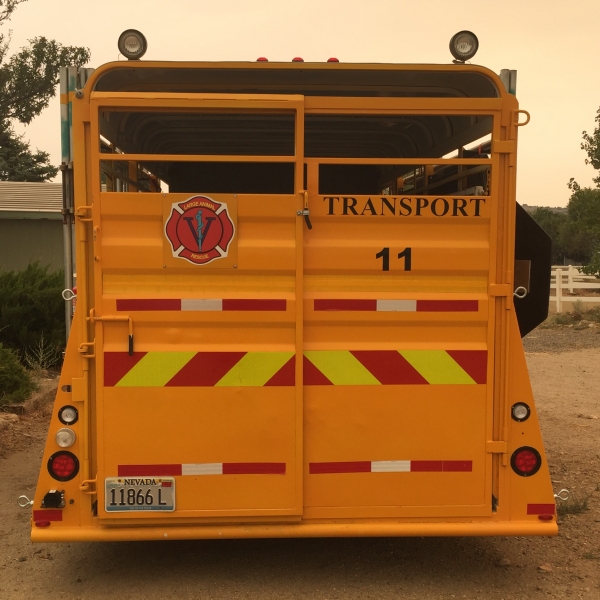
Even on a white trailer, the diagonal stripes stand out much better than the old red and silver tape.
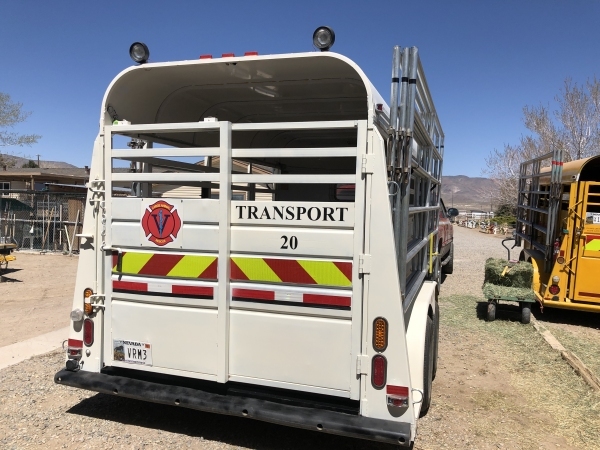
"Headlamp" view of rear conspicuity.

Striping of sides and fronts of trailers can also provide better recognition as to how large the trailer is and where it is.
Clearly visible contrasting striping on a white trailer.
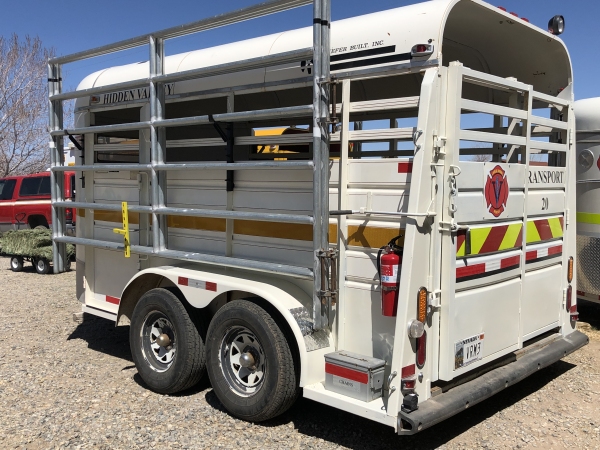
Another example of contrasts.
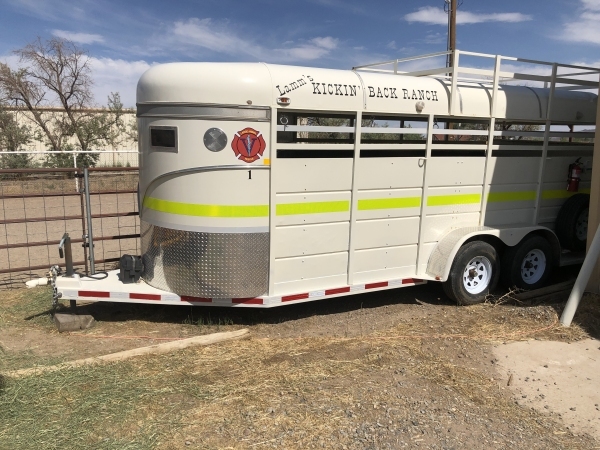
Views in the dark.
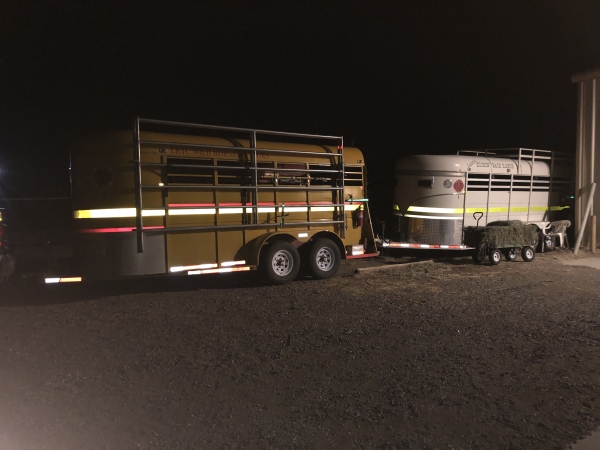
Conspicuity is effective and does not rely on good electrical connections in order to convey a clear message to motorists who may be approaching or following these trailers.
|
|
"Survival" Driving Practices
|
|
Towing trailers, especially when carrying live cargo, can provide unique driving characteristics and challenges. Some good habits will make our trips safer. We just have to think and drive like professionals. Here are a few concepts to practice.
- Conduct Pre-Trip Inspections.
Don't have a preventable accident or breakdown. Get in the habit of performing a brief pre-trip inspection before each trip. (A link to a sample checklist can be found below.)
- Check Road Conditions.
High winds, ice, snow and heavy rain clearly contribute to trailer accidents. If in doubt, reschedule your trip!
- Allow Extra Time.
Rushing increases the chance of an accident and is hard on live cargo. Take the time it takes to get to your destination safely.
- Get the "Big Picture."
Take in the whole scene on the road ahead. Trailer combinations don't stop easily or maneuver well to avoid collisions. See what's ahead before you get to it.
- Watch your Speed.
Speed affects trailer combinations far more than it does cars and pickups. It's smart to drive with the flow of traffic, but stay within speeds in which your combination handles well.
- Keep Right Unless Passing or Preparing to Turn Left.
Drivers tend to want to pass large vehicles, even when those vehicles are doing the speed limit. It can be dangerous to remain in left lanes and encourage other drivers to overtake you on the right through your blind spots. There are exceptions such as when you are overtaking slower traffic, when slower traffic is entering or turning off from the right lane, when you need to establish a left lane position in order to make a left turn, and when lane controls for larger vehicles are in effect.
- Allow Greater Following Distances.
Trailers increase the distance that it takes to make a safe stop.
- Go Easy on the Corners.
Smooth, well calculated cornering is easier on livestock and you're less likely to clip something or someone with your trailer.
- Minimize Distractions
Towing is the worst possible time to be distracted. You need much better reaction times to avoid accidents when towing. Use hands-free communications and GPS devices. Pull over to check maps or handheld GPS units. Most humans can only effectively focus on a couple of things at a time. Make those two things the road ahead and your driving!
RELATED LINKS
|
Press Back to return to the page which brought you here

